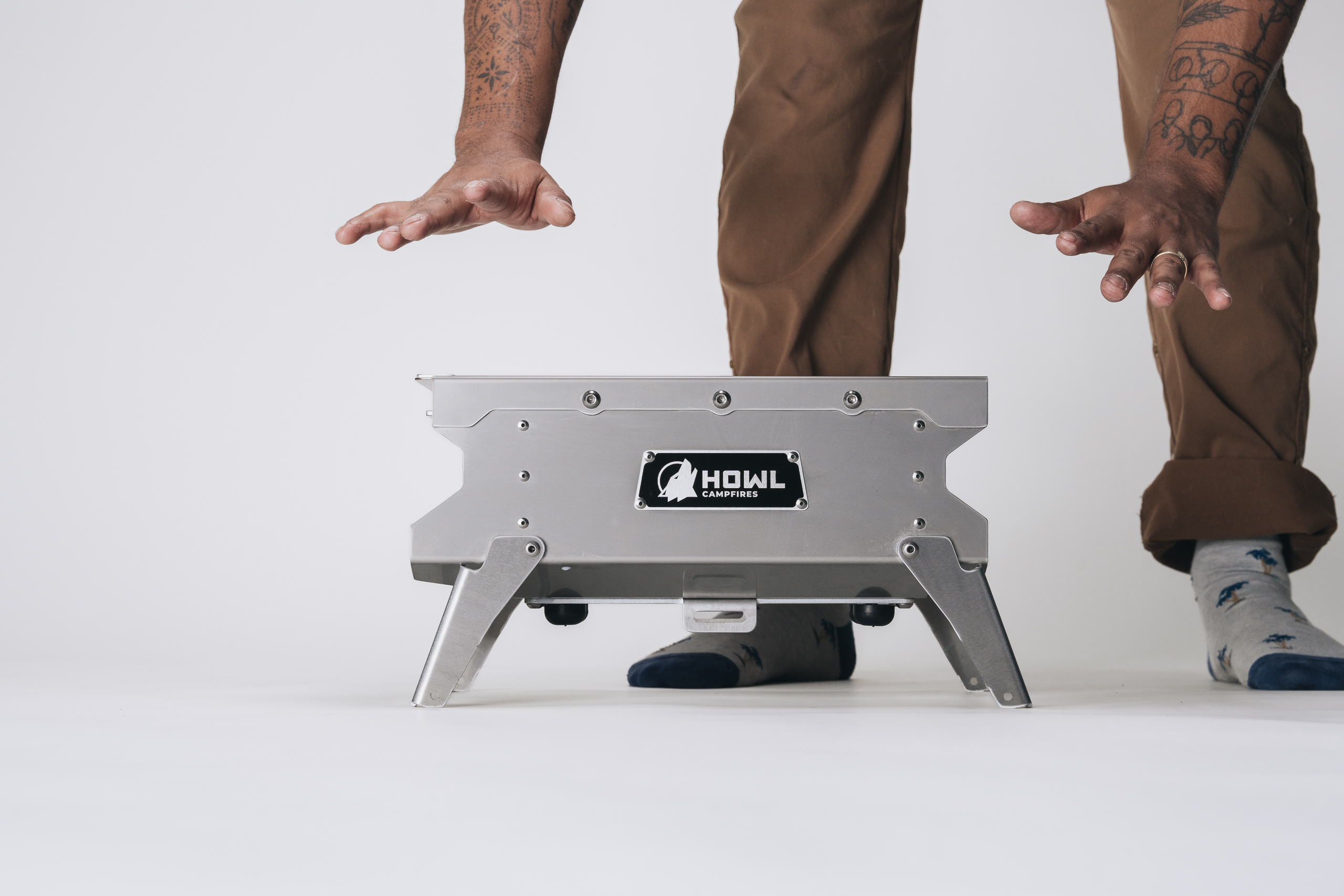In an era of increasing burn bans and rampant wildfires, the traditional wood campfire is quickly becoming a thing of the past for much of the year. Enter the Howl R1 Campfire, a bold new contender in the portable fire pit market. Promising extreme packability paired with a big-flame experience that’s often absent in compact designs, the R1 aims to redefine how adventurers enjoy campfires responsibly. Developed by Howl Campfires—a brand celebrated for its cutting-edge innovations in outdoor heating—the R1 caters to overlanders and outdoor enthusiasts who demand efficiency, portability, and stage one and two burn-ban compliance. But can this compact fire pit live up to its ambitious claims?
Small Size, Big Ambitions
At just 11 pounds and with dimensions comparable to a stack of printer paper, the Howl R1 is unapologetically compact. The company’s engineers clearly prioritized portability for this fire pit, which features folding legs and a streamlined shape for easy packing. It’s a clear win for overlanders and backcountry travelers, where space is always at a premium.
But the R1’s innovation doesn’t stop at the fire pit itself. Howl has addressed a long-standing annoyance for adventurers traveling with a portable campfire: propane tank stability. The R1 includes a tank stabilization system designed to keep your fuel secure on bumpy trails—an often-overlooked feature that can make or break a stress-free journey. For those who’ve wrestled with rogue tanks breaking loose from straps, this thoughtful addition, combined with a compact footprint, might be worth the price of admission.
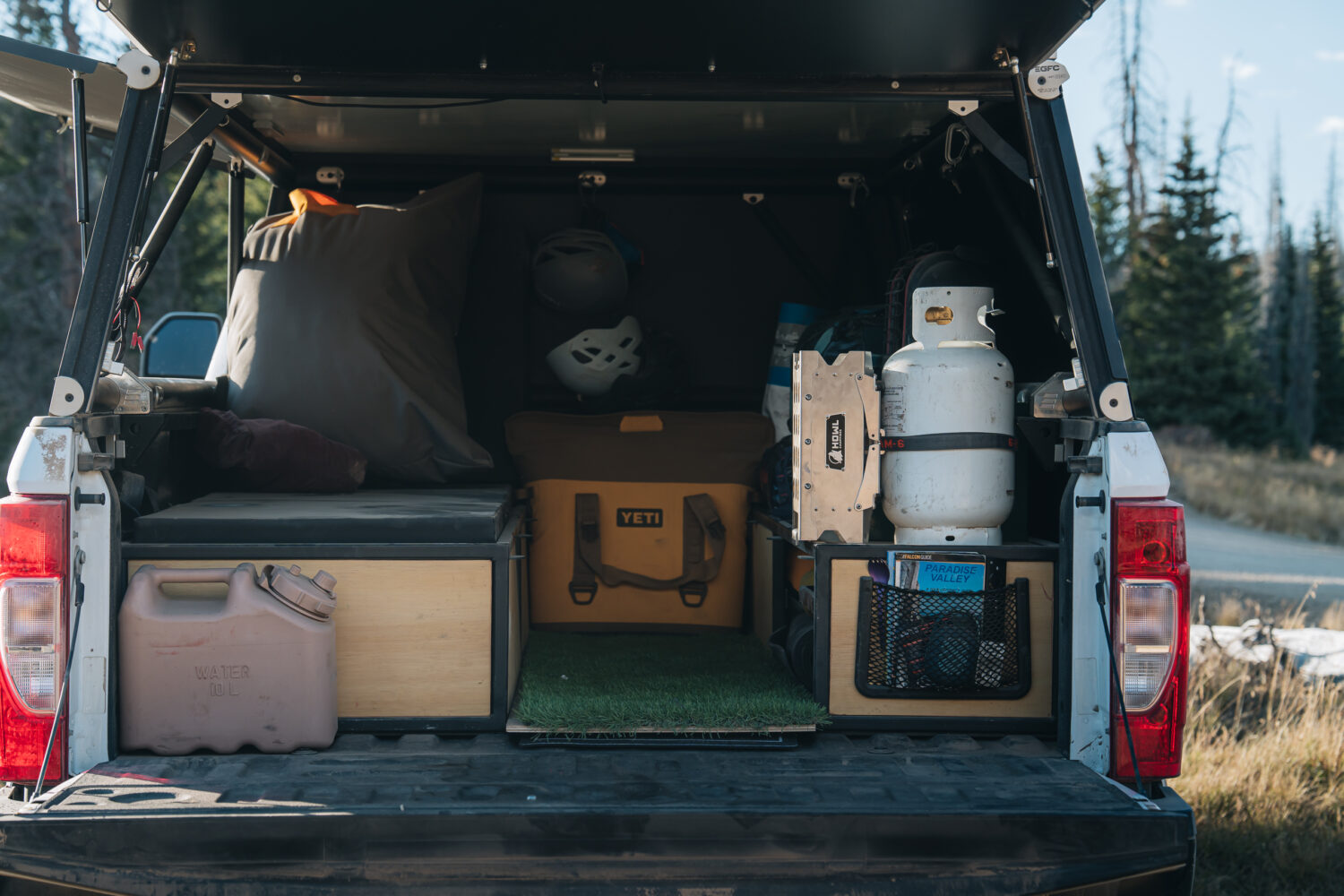
The Howl R1 acts as a stabilizer to secure 11- and 20-pound propane tanks.
All Night Long: Efficiency Meets Engineering
While many portable fire pits struggle to balance size with performance, Howl claims the R1 redefines efficiency. Using its A-Flame Burner technology—originally debuted on the flagship R4 portable propane campfire—the R1 produces impressive 32-inch flames while sipping fuel. HOWL promises eight hours of burn time at full blast on a standard 20-pound propane tank, giving users the freedom to party long into the night without frequent refueling.
The secret lies in the R1’s 160 micro-emitters, which work together to stretch flames skyward without excessive fuel consumption. This level of efficiency feels particularly relevant for long backcountry trips, where resupply stops are few and far between. However, it’s worth noting that while a 32-inch flame is certainly going to put off some heat, the R1 focuses more on creating light and ambiance. Unlike the Howl R4, which includes BarCoal technology for radiant warmth, the R1 is primarily a light source. Campers in colder climates may need to supplement their setup with additional heating solutions. Sure, this sounds like marketing speak but the R4 really is warm as hell; I remember the first time I stumbled by one at a campout—its radiant heat was so hot I had to check if I was at Chernobyl.
Wind? What Wind?
Another standout feature of the R1 is its wind resistance. Traditional fire pits often shield flames with tall walls, sacrificing efficiency in the process. Howl has flipped this idea on its head with the FlexDome Windscreen, a horizontal shield that protects the flames from gusts up to 55 mph without enclosing them. This allows the R1 to maintain visible, functional flames in challenging weather while conserving fuel—a clever engineering solution that feels well-suited for overland use.
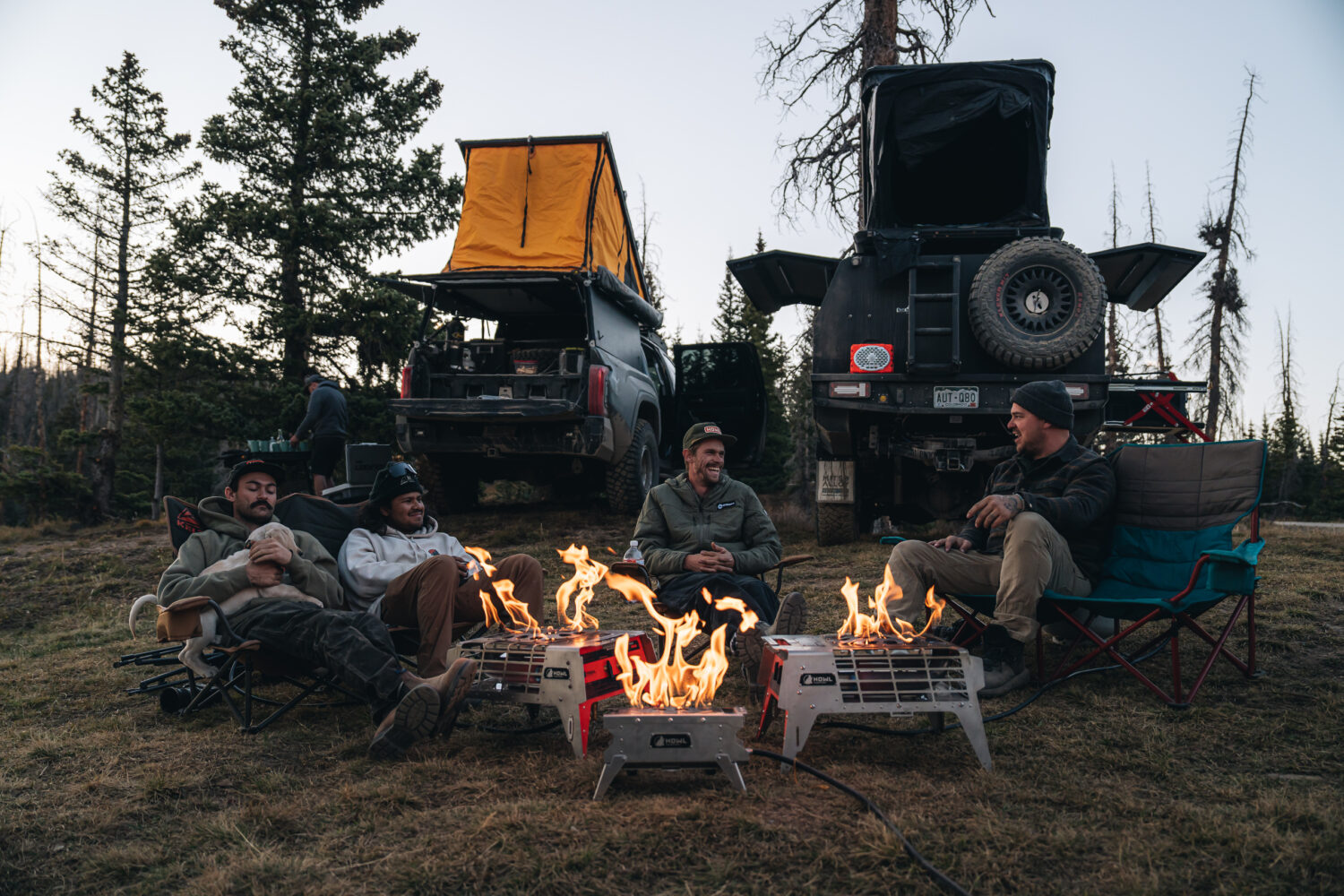
The all-new, compact Howl R1 is surrounded by a pair of HOWL R4 portable propane campfires.
The Environmental Factor
In an age of increasing wildfire risk, the HOWL R1 is also designed with safety in mind. The fire pit is UL-certified and legal to use in Stage I and Stage II burn bans across all 50 states. For adventurers operating in fire-prone regions, this level of compliance could make the R1 a go-to choice. Here at Expedition Portal, nestled in the high-and-dry mountains of Prescott, Arizona, we know all too well the challenges of fire season. The ability to enjoy an ethical, legal “bush telly” during burn bans brings a spark of entertainment to the otherwise quiet nights of backcountry camping.
Who Is the R1 For?
At $349, the Howl R1 sits firmly in the premium category. However, when compared to the $1,299 price point of its big brother, the Howl R4, it almost feels like a bargain. For overlanders with tightly packed rigs, adventurers planning extended trips, or anyone seeking a big flame in a compact package, the R1 is a compelling option. That said, it’s essential to understand its niche. If radiant heat or extreme weather capability is your priority, the Howl R4 remains the go-to choice.
The R1, however, is a specialist: lightweight, packable, fuel-efficient, and ready to follow wherever the road takes you. For us, we suspect the R4 might end up staying home more often, reserved for larger gatherings or outings where group warmth is a priority. Meanwhile, the R1 feels destined to be the perfect companion for smaller adventures, where pack space is tight, but ambiance and efficiency still matter.
The Howl R1 is available now at howlcampfires.com.
Read our review of the Howl R4 here: expeditionportal.com/portable-fire-pits-for-every-season/.
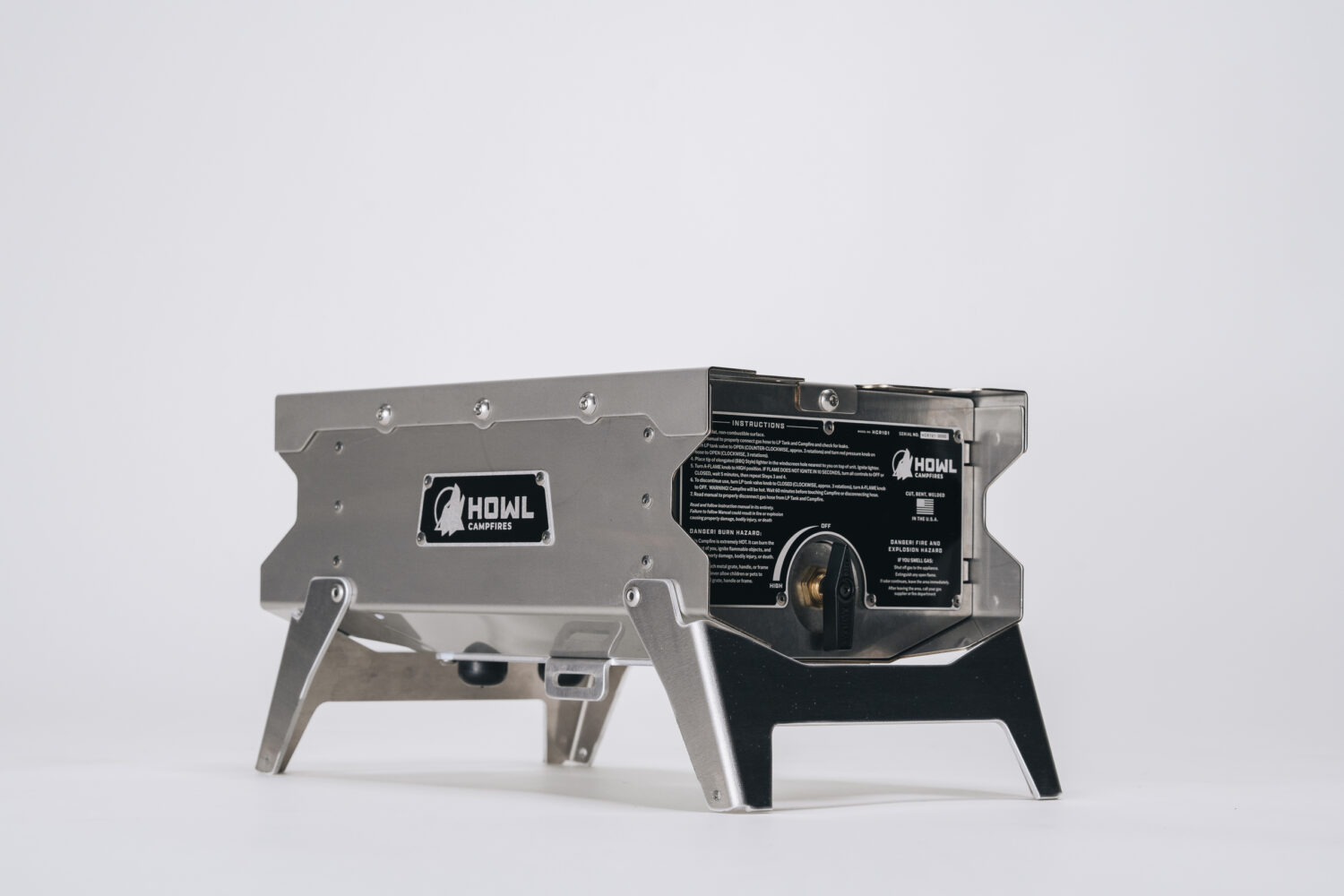
The HOWL R1 features an adjustable flame and folding legs for compact storage.
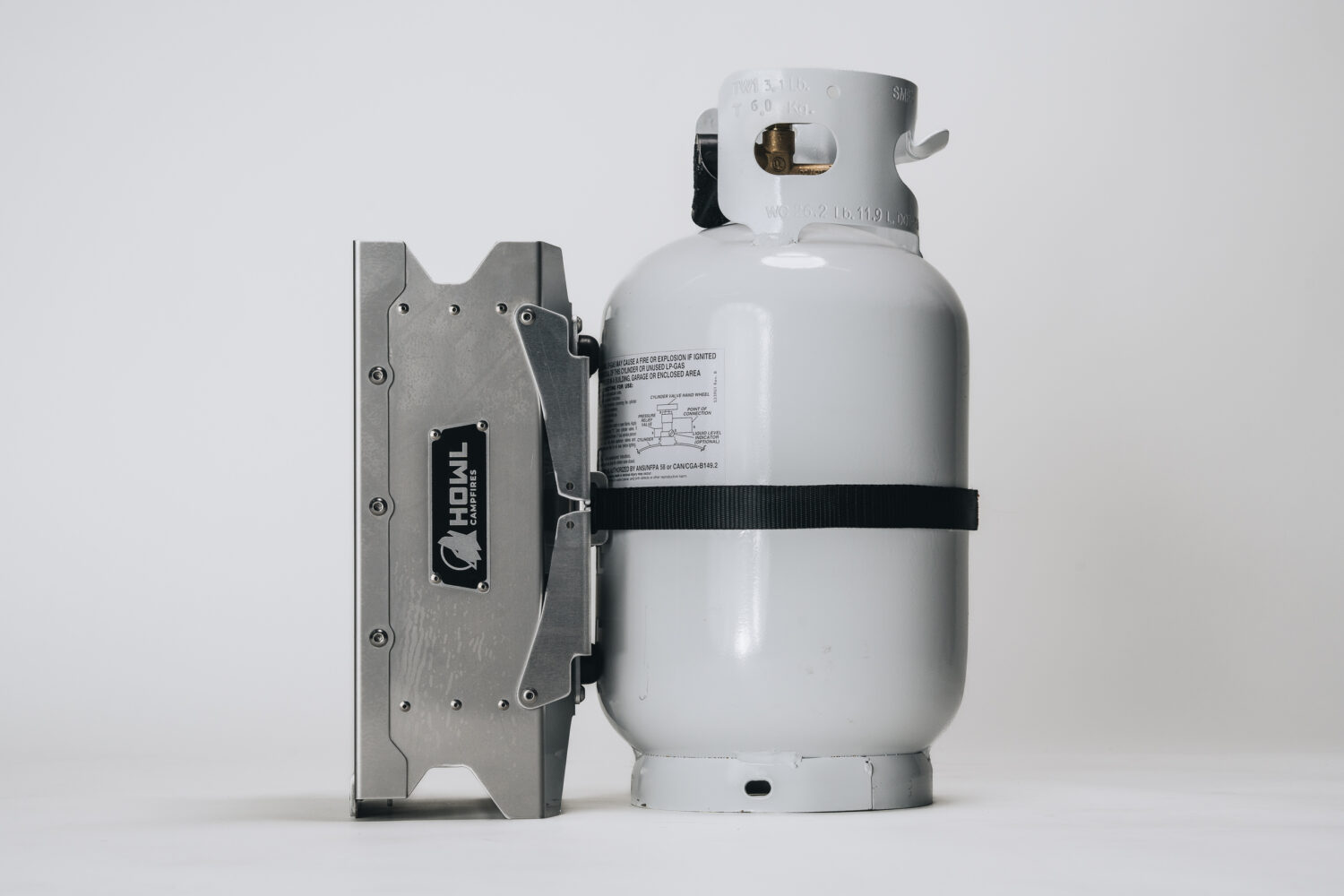
You can expect approximately four hours of burn time at full blast from an 11 pound propane tank. This is the size I’d use.
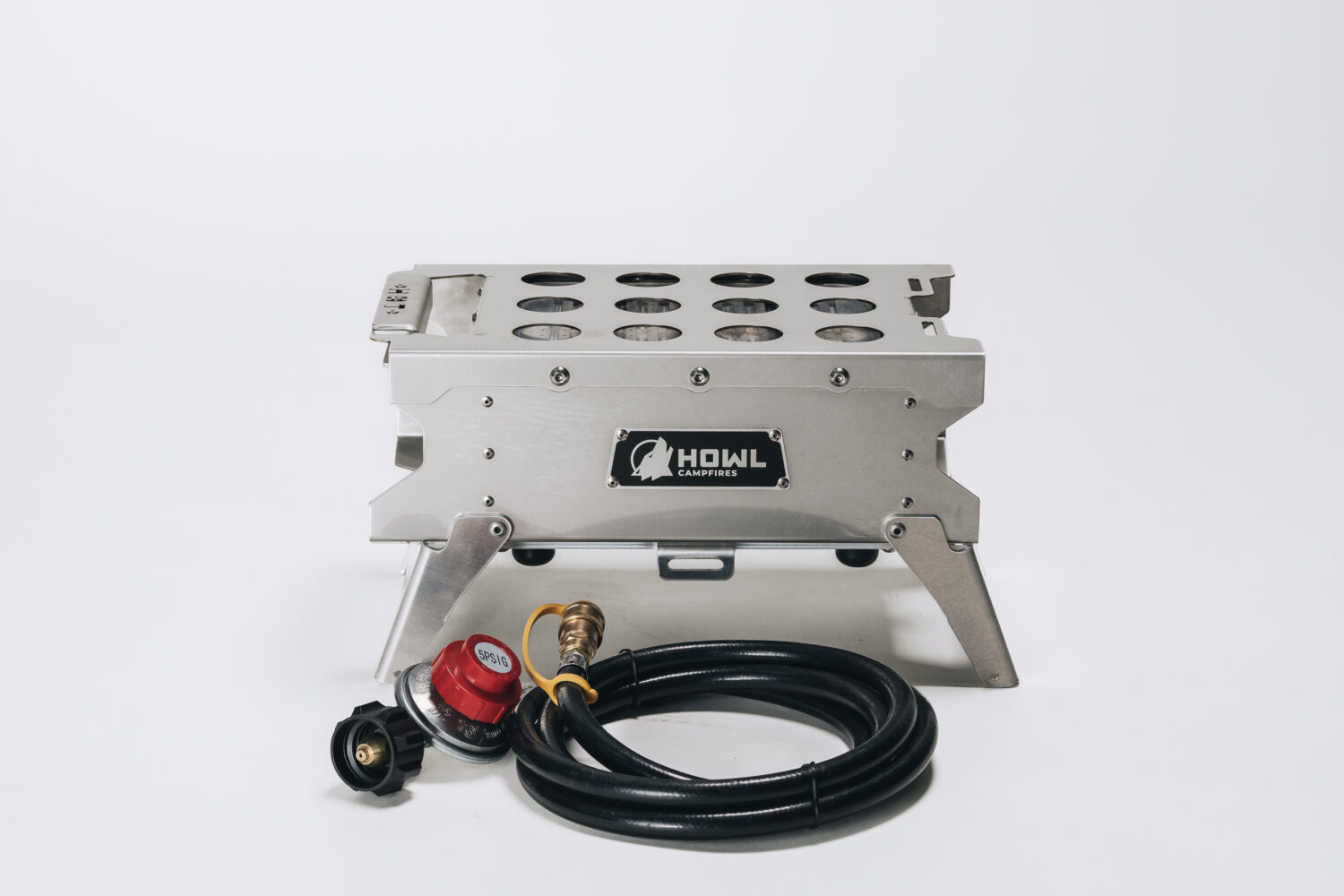
The included quick-release propane hose attaches to standard 11 and 20 pound tank sizes.


